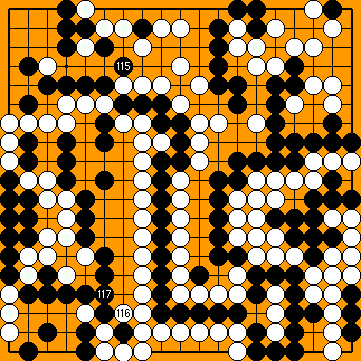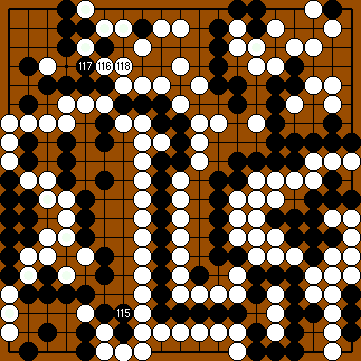
The sequences below have been found in games (played October 2023 - March 2024) between two KataGo networks, which were specially trained on Igo Hatsuyōron 120:
- Karl Desfontaines' 40-block network from July 2022.
- My 60-block network still in progress.
I have been asked to add a variation tree to this page in order to better and more clearly illustrate the evolutionary history of the different solutions. |
|
In the LifeIn19x19 forum, I have published some intermediate results for further training especially with the non-Main-Semeai variations. |
Caveat
Please be aware that there is NO guarantee that the sequences are 100% correct!
Even AI makes mistakes during "play", especially if it is travelling in parts of the variation tree
that have not (yet) been sufficiently analysed during training.

Igo Hatsuyorōn's Problem 120 (2024)
孔明仲達勢
"Zhuge Liang and Sima Yi"

|
黒先
|
|
|
|
|
|
|
|
|
|
|
|
Black plays the Guzumi |
White tenukis, continuing with Yamada's Tsuke |
|
|
|
|
|
White wins by two points. |
Variation 
Capture Variation of the Main Semeai

|
|
|
|
|
|
|
|
|
|
|
|
|
White wins by two points. |
Variation 

Semeai Variation of the Main Semeai

With |
|
|
|
|
|
|
|
White wins by two points. |
Variation 

Non-Main-Semeai Variation #2

Black plays the Guzumi |
White does not answer locally, |
|
|
|
|
|
White wins by two points. |
Variation 


Non-Main-Semeai Variation #3

After Black has already inserted both Throw-in and all the Kikashi in the Hanezeki "early", |
|
|
|
|
|
|
|
White wins by two points. |
Variation 



Non-Main-Semeai Variation #4

Black plays the Guzumi |
|
|
|
|
|
|
White wins by two points. |
Variation 

Non-Main-Semeai Variation #5

White decides to change the order of moves with |
|
|
|
|
|
|
|
|
|
White wins by two points. |

Variation Tree
|
|
|
|
|
|
|
|
|
|
|
|
|
|
|
|
|
|
|
|
|
|
|
|
|
|
|
|
|
|
|
|








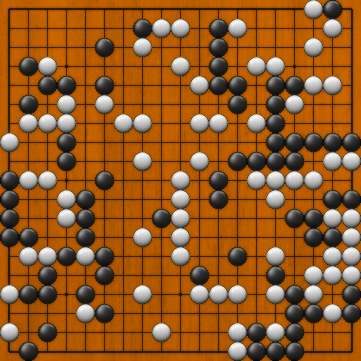
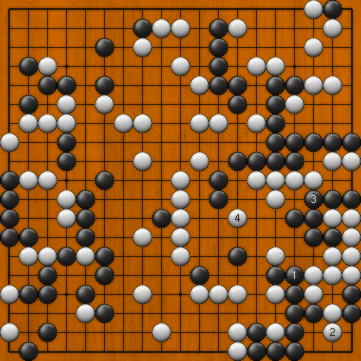
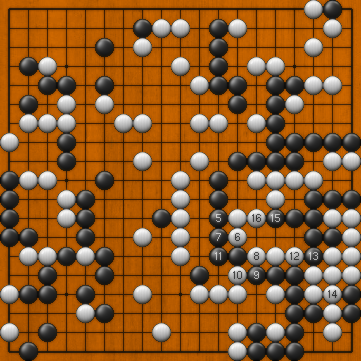
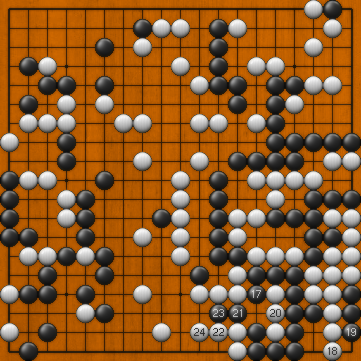
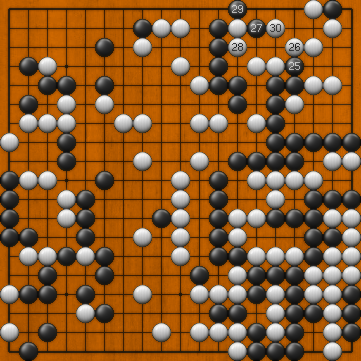
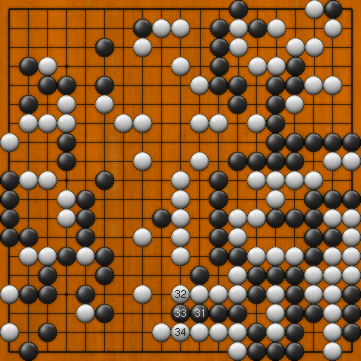
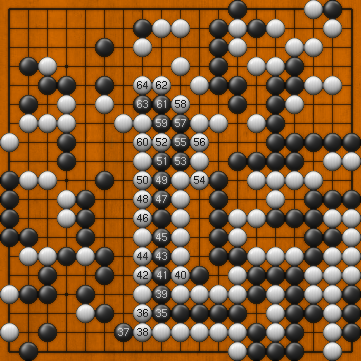
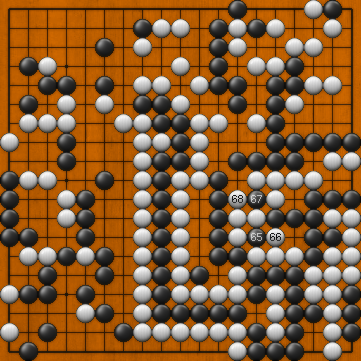
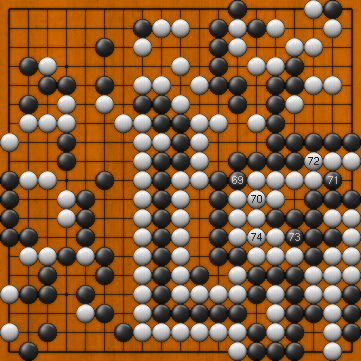
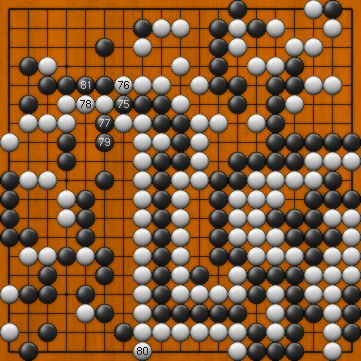
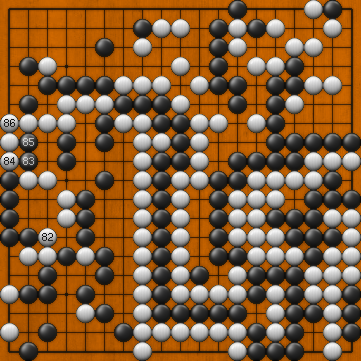
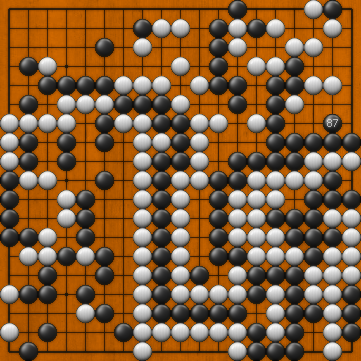
 at the latest possible moment.
at the latest possible moment.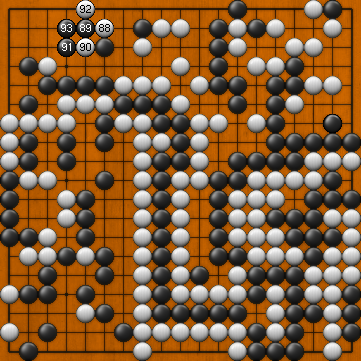
 in the upper left corner.
in the upper left corner.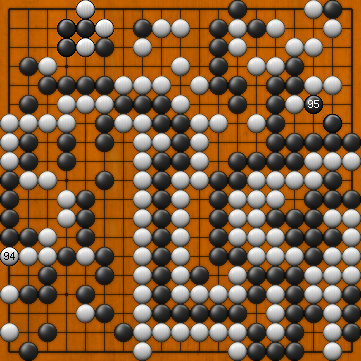
 uses her sente to immobilise Black's five stones in the Nakade.
uses her sente to immobilise Black's five stones in the Nakade.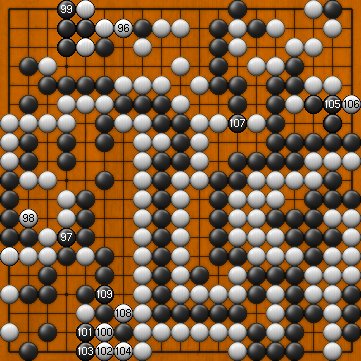
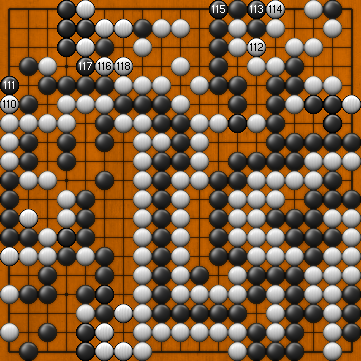
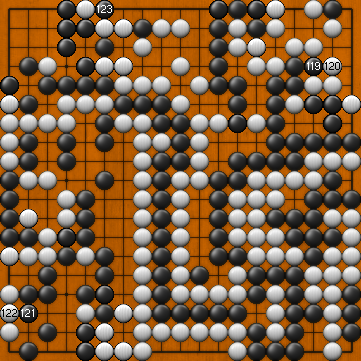
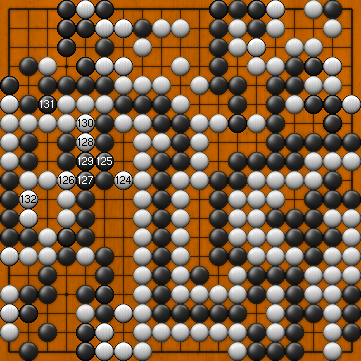
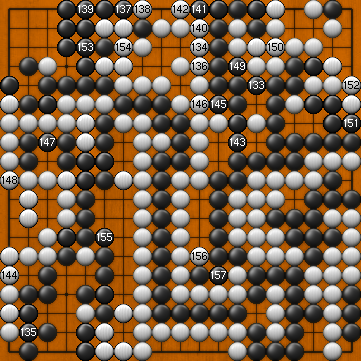
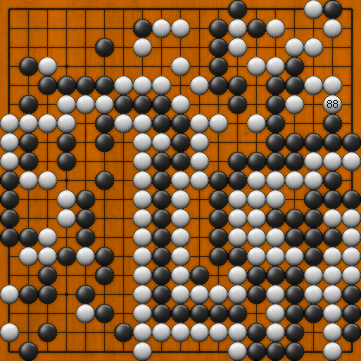
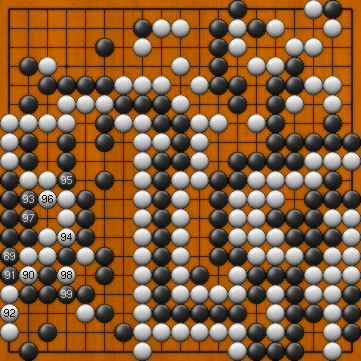
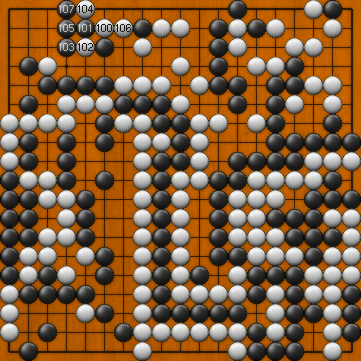
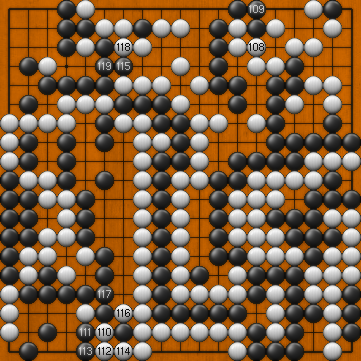
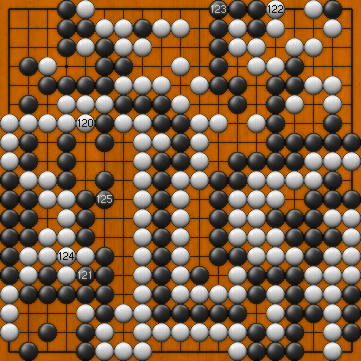
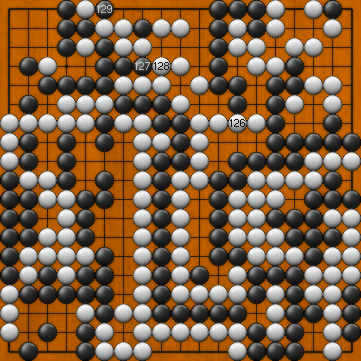
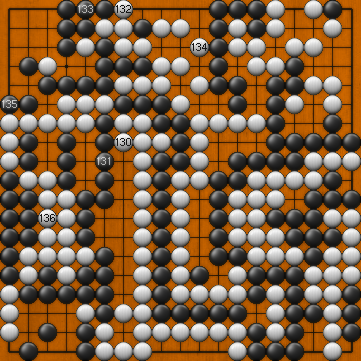
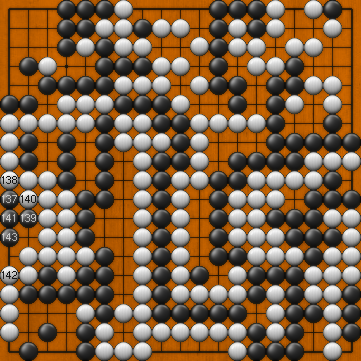
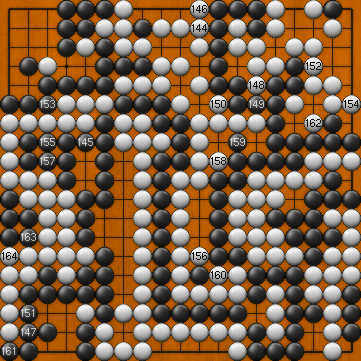
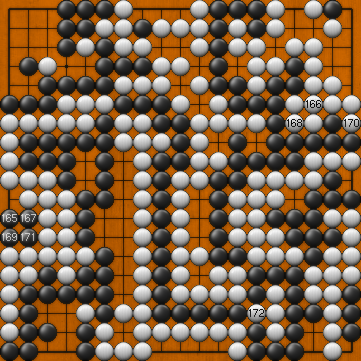
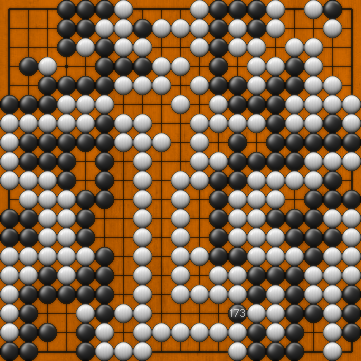
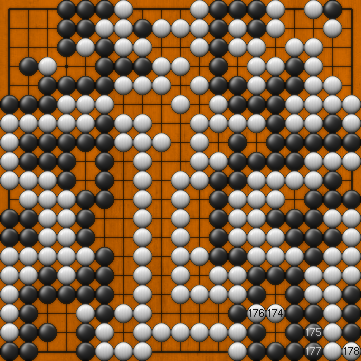
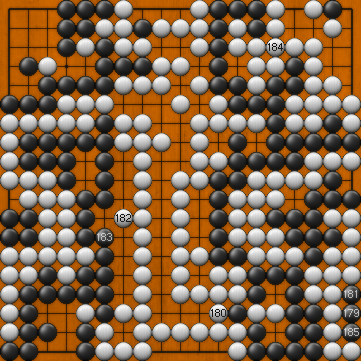
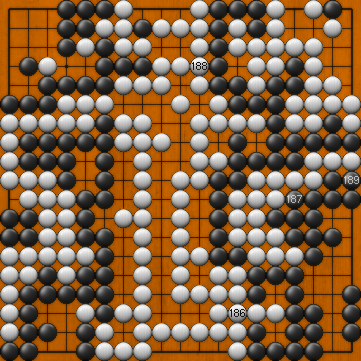
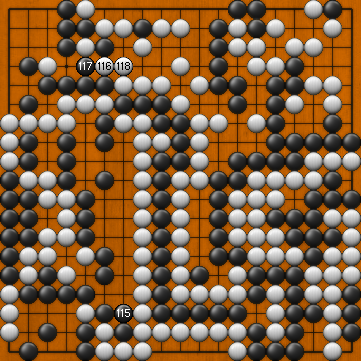
 in the lower left Black triggers the Semeai Variation.
in the lower left Black triggers the Semeai Variation.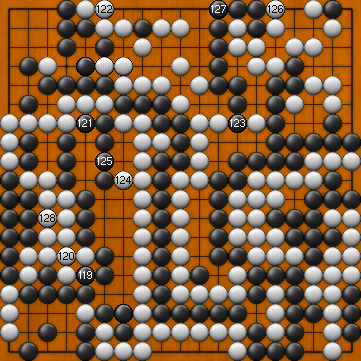
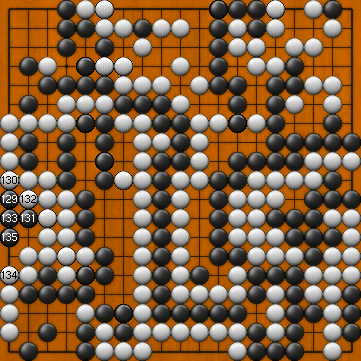
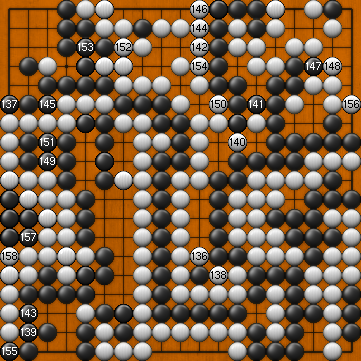
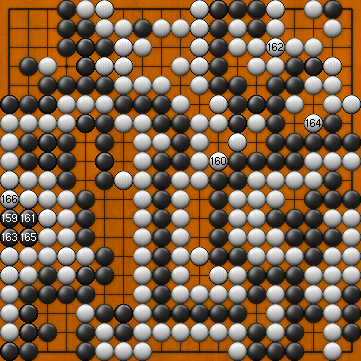
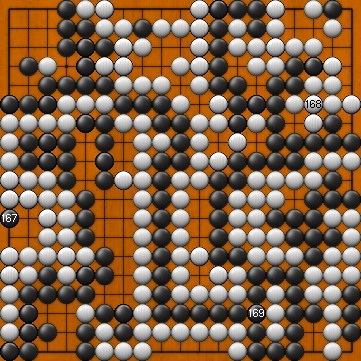
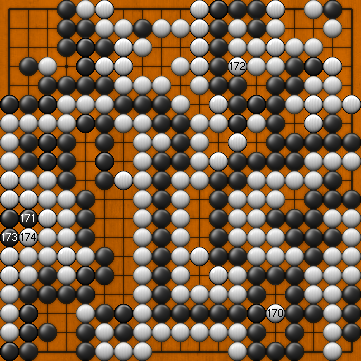
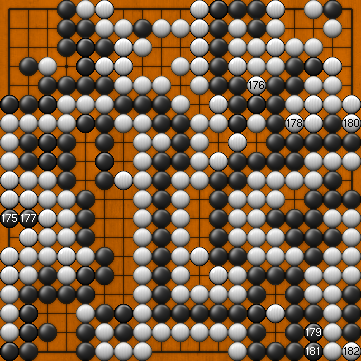
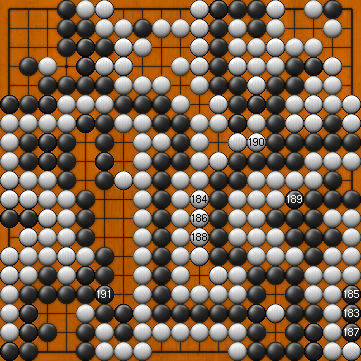
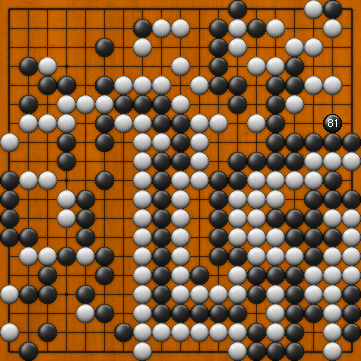

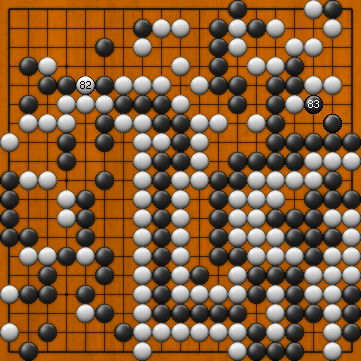
 .
.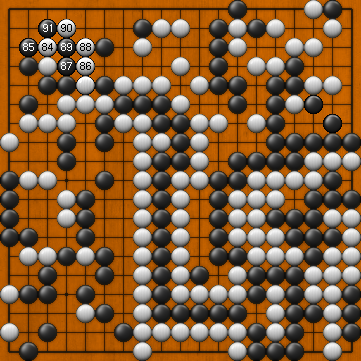
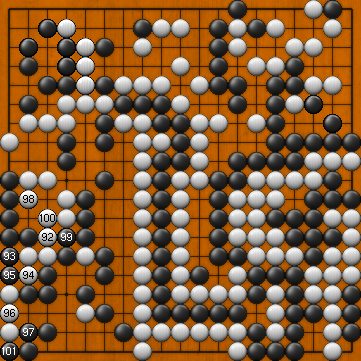
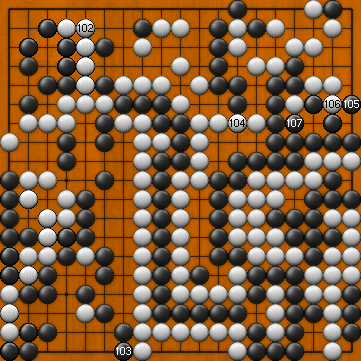
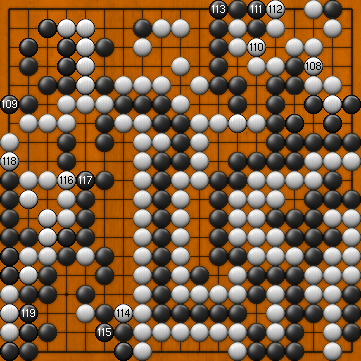
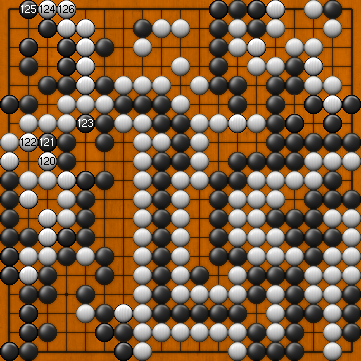
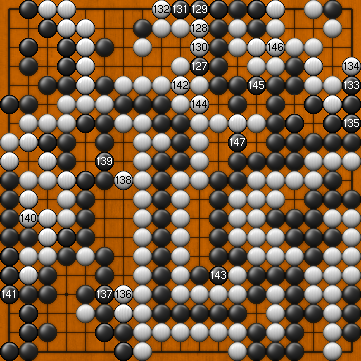
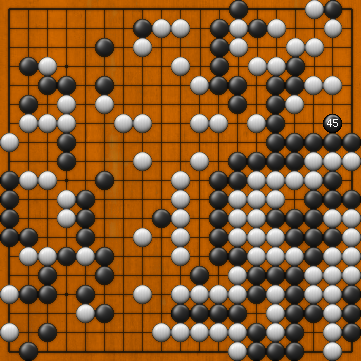
 "early".
"early".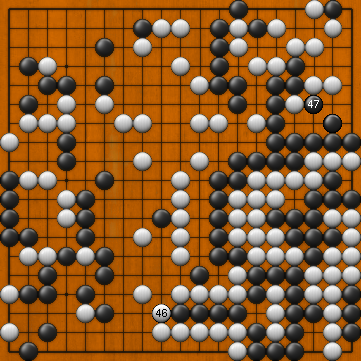
 blocks the path of the Hanezeki's Tail at a length of four stones.
blocks the path of the Hanezeki's Tail at a length of four stones.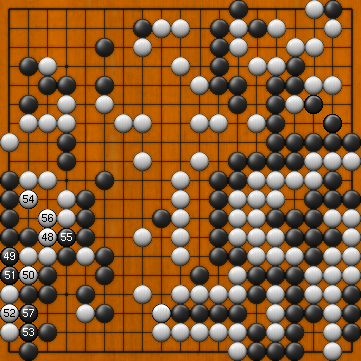
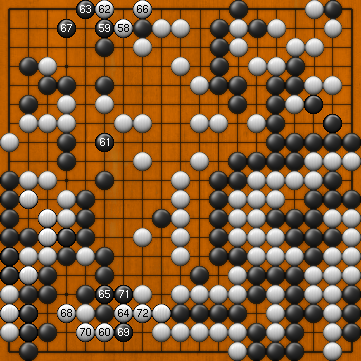
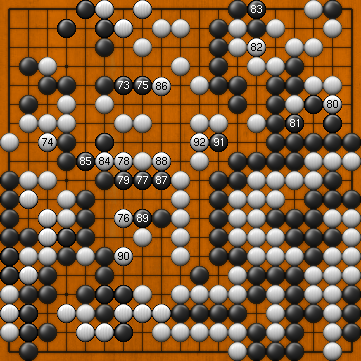
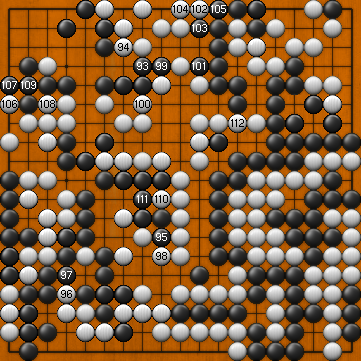
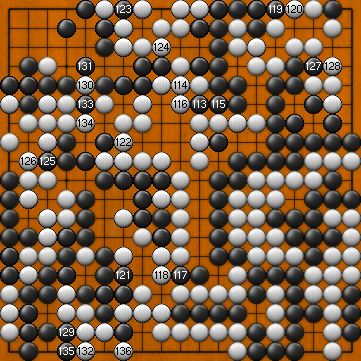
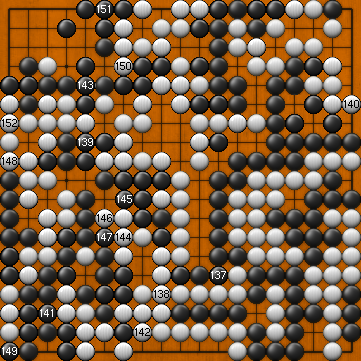
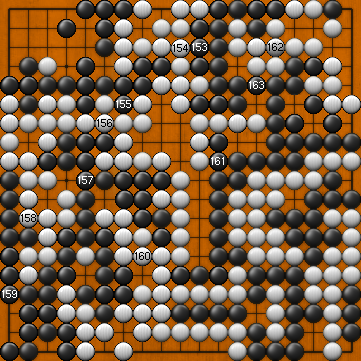
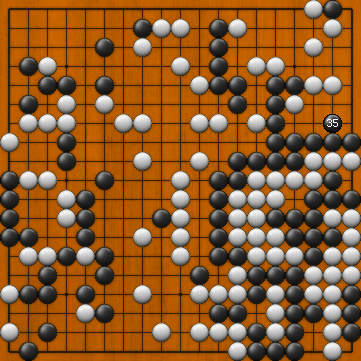
 "early", after a change in the order of moves
"early", after a change in the order of moves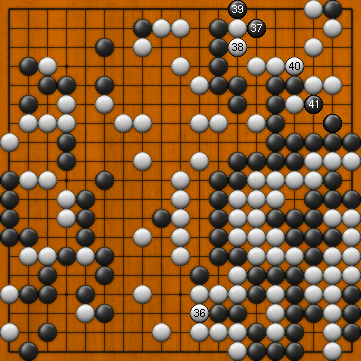
 blocks the path of the Hanezeki's Tail at its minimum length of two stones.
blocks the path of the Hanezeki's Tail at its minimum length of two stones.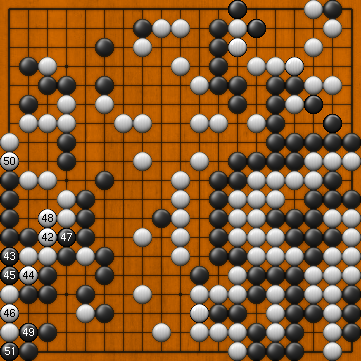
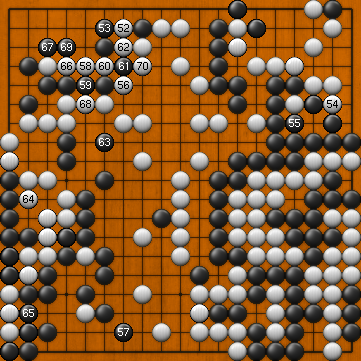
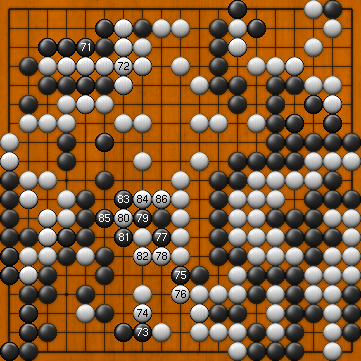
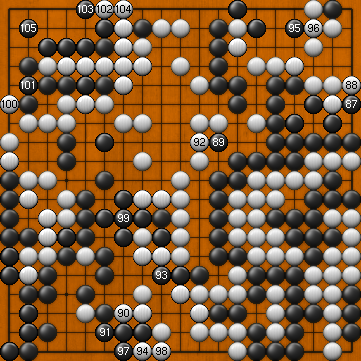
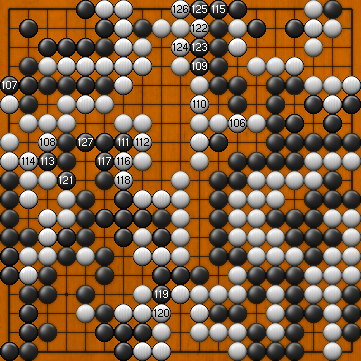
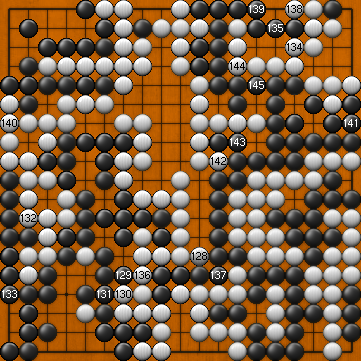
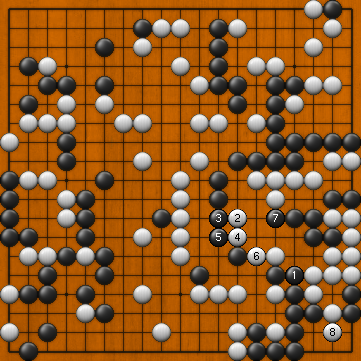
 .
.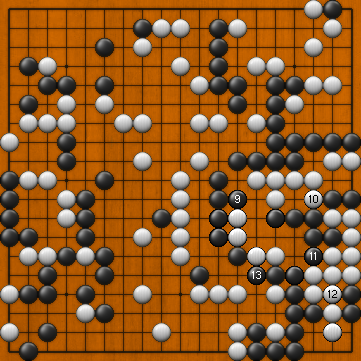
 intends to capture some of White's stones in the Hanezeki,
intends to capture some of White's stones in the Hanezeki,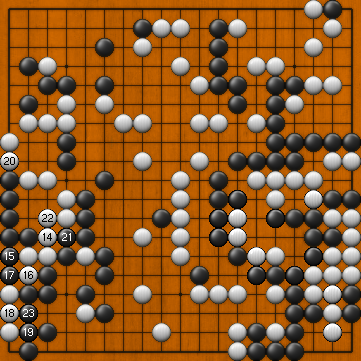
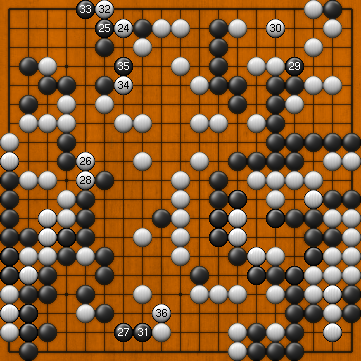
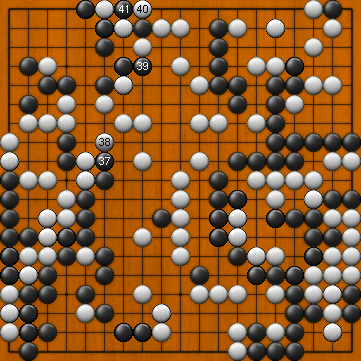
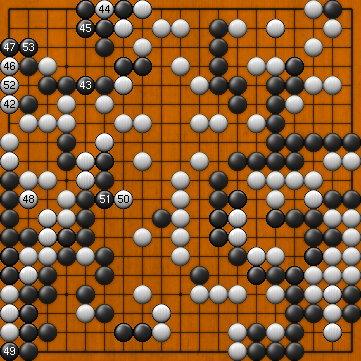
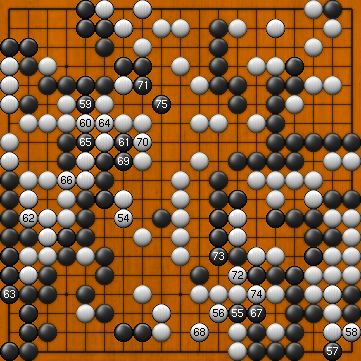
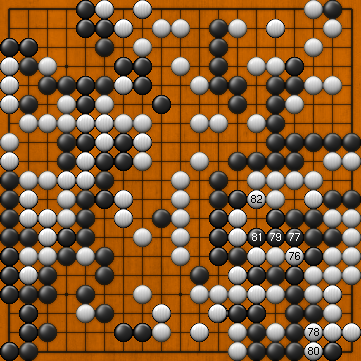
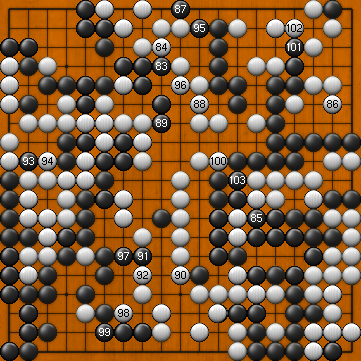
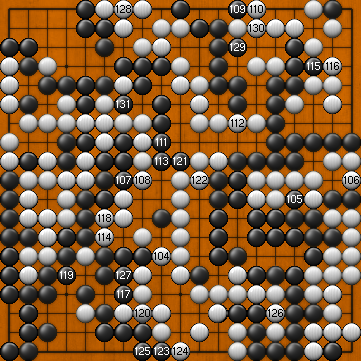
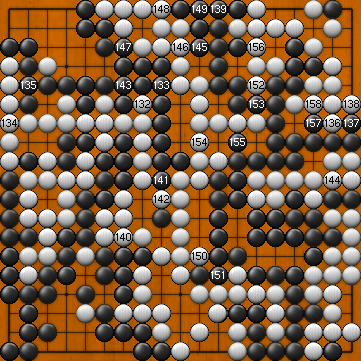
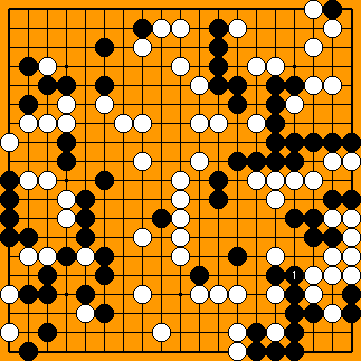
 .
.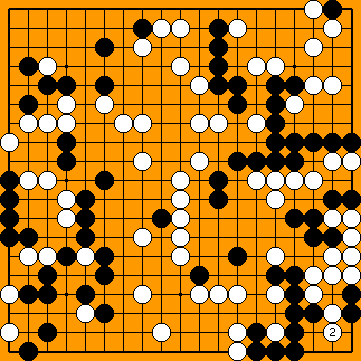
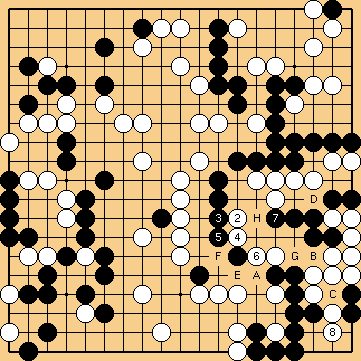
 spoils White's shape in the Hanezeki "early".
spoils White's shape in the Hanezeki "early". ,
,  ,
,  ,
,  , ...,
, ...,  ,
,  .
.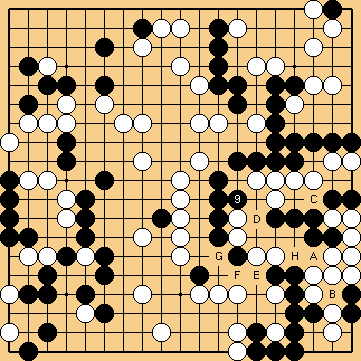
 , ...,
, ..., 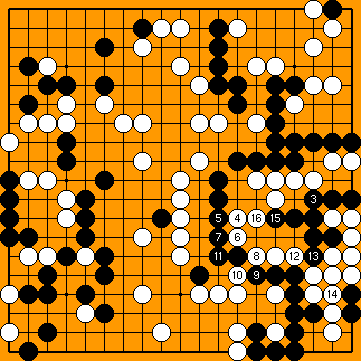
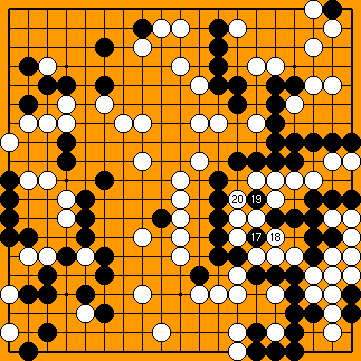
 ,
,  in the Hanezeki, providing White with two additional prisoners (= points).
in the Hanezeki, providing White with two additional prisoners (= points).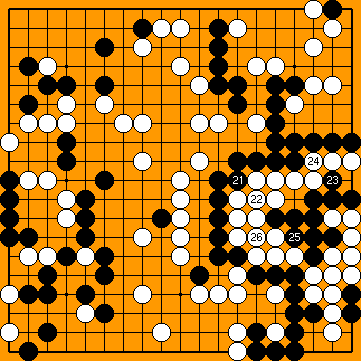
 ,
,  in the Hanezeki "early" does not affect the ensuing sequences.
in the Hanezeki "early" does not affect the ensuing sequences.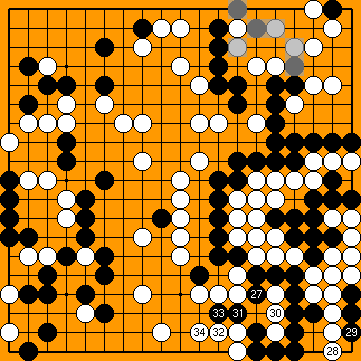
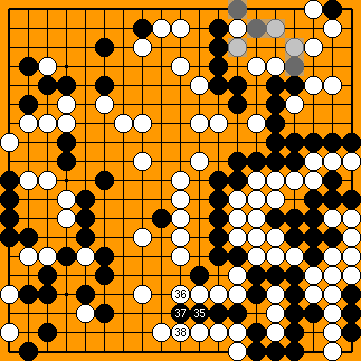
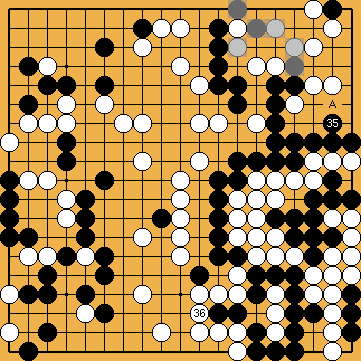
 .
.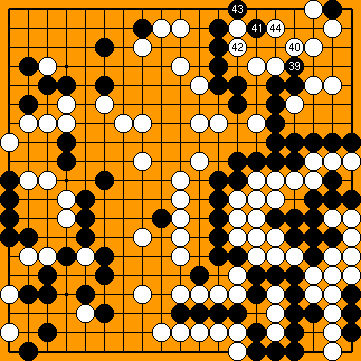
 as
as  .
.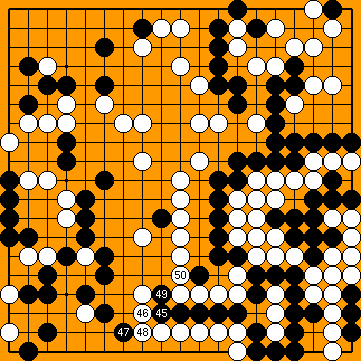
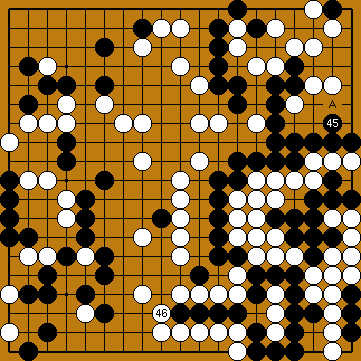
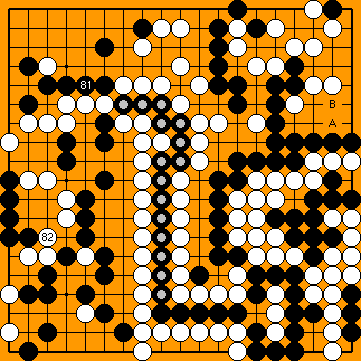
 -moves in the centre (White would be forced to answer locally at
-moves in the centre (White would be forced to answer locally at 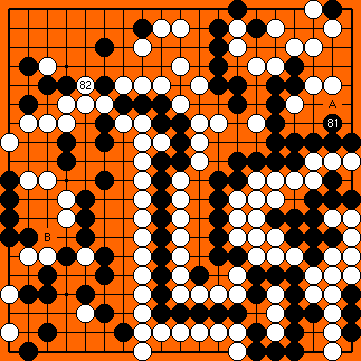
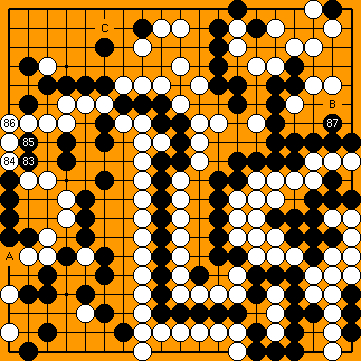
 at
at  at
at 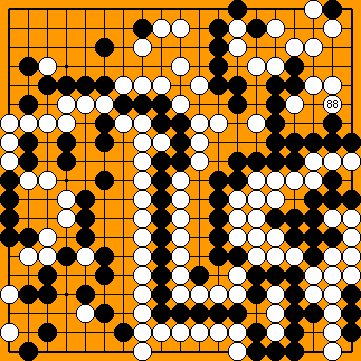
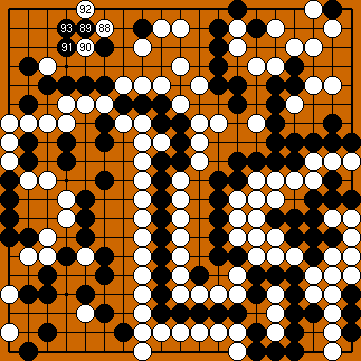
 first, resulting in a change in the order of moves.
first, resulting in a change in the order of moves.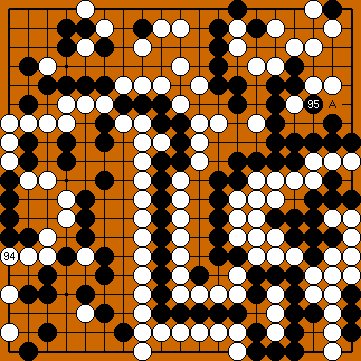
 .
.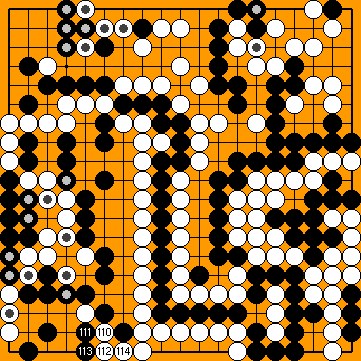
 there comes the last decision point for Black in this presentation.
there comes the last decision point for Black in this presentation.